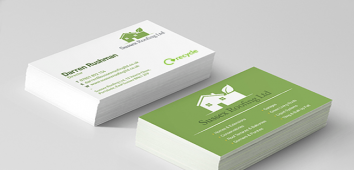What is Digital Printing?
Author:
Jim Cunliffe
Published: 23/08/2013
Since the computer revolution changed the way we live and work I am sure that most of us are aware of its effects, but how many people realise how computers are revolutionising the printing industry? This revolution is called Digital Printing.
The History of Printing...
In the 1400's when Gutenberg developed the first printing press it was slow and expensive to print anything. Even then people were clamouring for a way to quickly and inexpensively produce short-run printed material. The ability to print four-colour short-run material was next to impossible to do before the merging of old technology, the printing press, and new technology, computers. This marriage created a new and exciting area of printing, Digital Printing Technology.
A New Era...
Digital printing has caused a paradigm shift in the printing world; making the impossible, possible. It brought with it the exact solution that many print customers needed and offered a viable printing option that now the industry wouldn't dream of doing without.
Analogue Printing
Before we delve into what digital printing is lets take a moment to look at analogue printing technology to better help us understand the differences. Traditional printing is an analogue technology. Analogue is defined as a continuously varying event such as sound or pressure, while a digital signal is either on or off, thus making it a more predictable. Analogue printing methods reproduce images by creating a copy or an "analogous" image.
Lithography uses analogous images on plates to transfer ink to print substrates. Screen printing employs film positives and negative stencils which resemble the original image to create prints. Gravure, flexography, etching, and other analogue print methods utilise other forms of analogous image transfer. All of these methods reproduce images from a primary image.
How Digital Printing Works
Digital Printing takes a different approach assembling each image from a complex set numbers and mathematical formulas. These images are captured from a matrix of dots, generally called pixels, this process is called digitising. The digitised image is then used to digitally control deposition of ink, toner or exposure to electromagnetic energy, such as light, to reproduce images. The mathematical formulas also allow for algorithms to compress the data. It also gives a method of Calibration or Color Management Systems which helps to keep images looking at the same colour despite where they are view or printed. One important function that the mathematical formulas allowed was the development of a common language for digital printing it is called PostScript and was developed by Adobe. To see what PostScript looks like open a PDF or EPS in a text editor, the code seems very intricate but to a computer it's just a simple code of instructions.
One of the most important advantages that digital printing offers is a quicker response time due to its minimal press setup and its built in multi colour registration system. This eliminates many of the upfront, time consuming processes that can cause analogue printing methods to have a slower turn-around time. Another advantage of digital printing is the ability of offer variable printing; this means that each printed piece can have different information on it providing personalisation and customisation unmatched by analogue processes.
The Advantages of Digital Printing
Digital printing technologies give the designer more options of substrates to print on due to its non-contact printing. This eliminates the distortion of images that occurs in analogue process, like screen printing. It also requires less harsh methods of holding the substrate in the press, thereby giving more options of substrates. This means that substrates such as fabrics, very thin paper, and even ceramics can be safely printed on offering the customer more choices in designing.
The market is driving the desire for digital printing and therefore pushing its development and adoption. Print buyers want to eliminate the risks and expenses of maintaining inventory. Mass and batch printing runs are giving way to the digital printer's ability to have shorter print runs, mass customisation, and less turn-around time.
Digital printing best serves the demand for: variable data printing, personalisation, customisation, less spoilage, faster proof cycle, smaller archival storage, quick response, just-in-time delivery, and short to medium print runs. While printers are still employing analogue print methods they have the ability, with digital printing, to offer their customers more options and provide better service.


